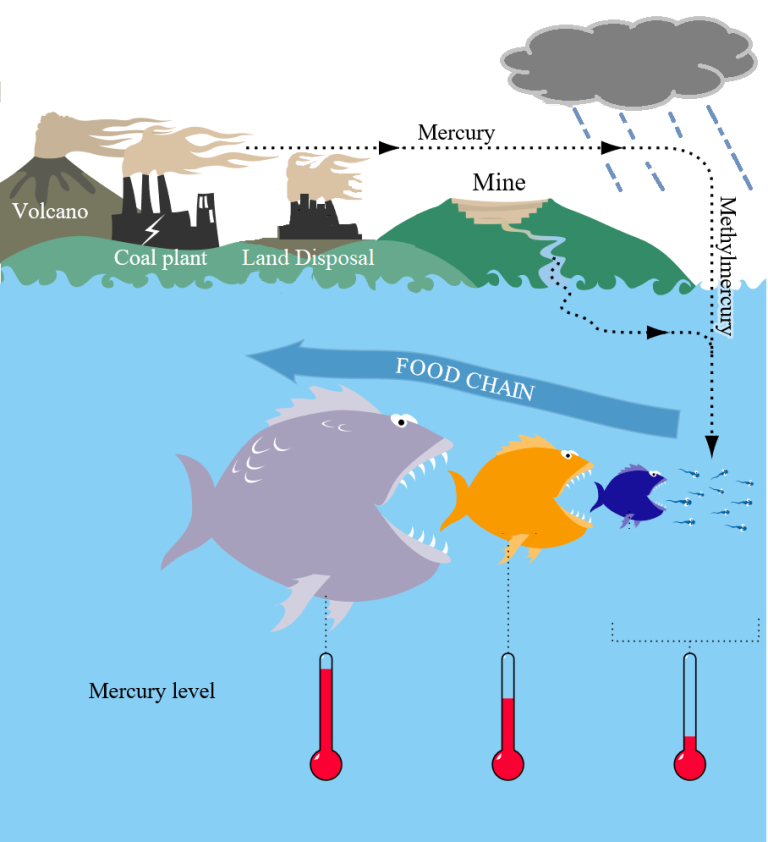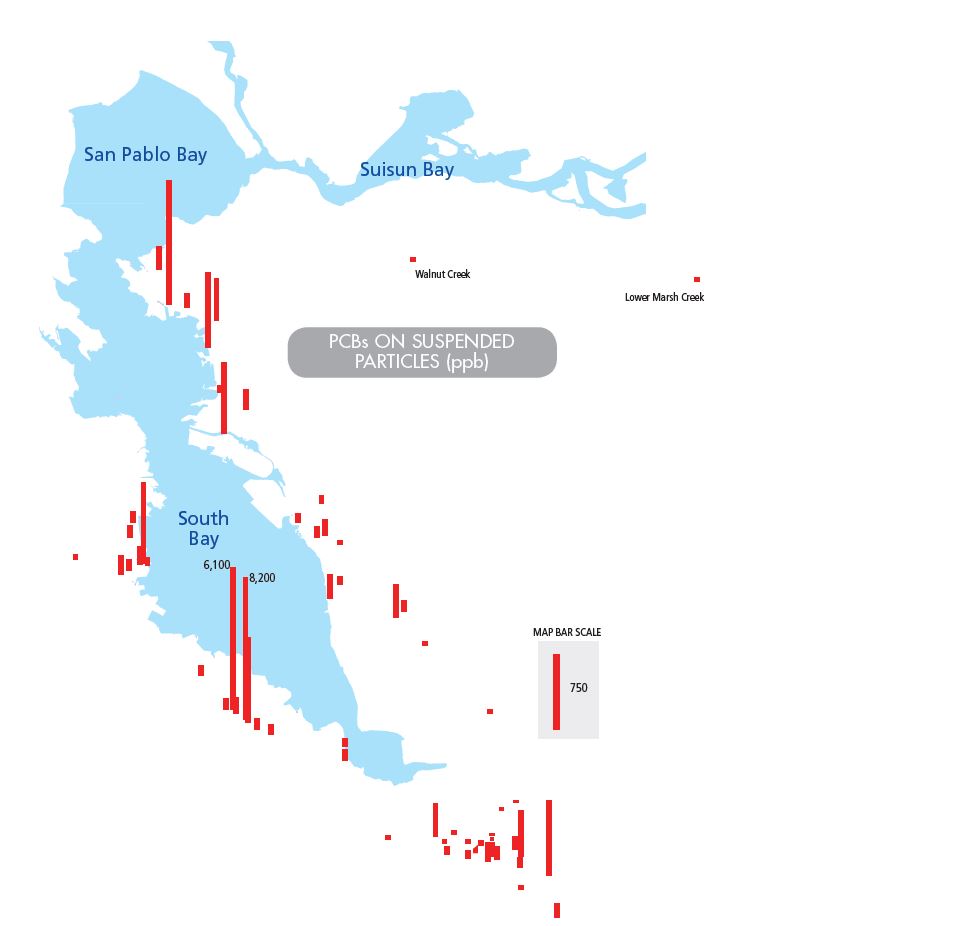Mercury and PCBs
Mercury and Polychlorinated Biphenyls (PCBs) are often referred to as "legacy pollutants," because they persist in the environment long after their historic use and improper disposal. Both pollutants have been found at high levels in certain fish throughout San Francisco Bay and the Delta, and both have been found to cause serious health concerns in humans. Contra Costa Clean Water Program works to inform our communities about which fish are safe to eat, while also mitigating the impact of these legacy pollutants through household hazardous waste and safe building demolition programs.
Quick Links:
- Guides to Eating Fish in the Bay and Delta (cccleanwater.org)
- Household Hazardous Waste (cccleanwater.org)
- Learn about PCBs (EPA.gov)
- Learn about Mercury (EPA.gov)
- PCBs in Building Demolition (cccleanwater.org)
- Annual Reports (cccleanwater.org)
Mitigating Legacy Pollutants
The Contra Costa Clean Water Program helps municipal agencies carry out control programs for mercury and PCBs. Mercury reduction efforts include household hazardous waste collection events and consumer outreach. Many of the Municipal Regional Stormwater Permit requirements related to PCBs have involved regional projects and collaborations. Improved water quality is possible when these legacy pollutants are understood, monitored and managed properly.
- Pollutants of Concern Commercial/Industrial Inspector Training Material (PDF from basmaa.org)
- Technical Memo to BASMAA Municipal Operations Committee from EOA, January 2011
- Includes industrial and commercial facilities of concern for Mercury, PCBs, and other Pollutants of Concern, as well as Best Management Practices (BMPs)
- This and related documents may be found on the BASMAA website Committees Programs & Projects – Municipal Operations (basmaa.org)
Sources of Mercury
Mercury is a naturally occurring element in the Earth, but several activities have led to unsafe amounts of this element concentrating in our soils and waters. Human-caused sources of mercury include historical mining (mercury was mined in the 1800s to assist with gold and silver mining), modern artisanal mining, fossil fuel combustion, concrete production, and improper disposal of certain household items (e.g., fluorescent bulbs, batteries). Polluted air, soil, and stormwater can transport mercury to the Bay and Delta, where bacteria then turn it into methylmercury, a form of mercury that is a known neurotoxin.

Mercury travels to waterbodies, becomes toxic, and accumulates up the aquatic food chain.
(image by B. Higman, Ground Truth Trekking, adapted by E. Lennon, CCCWP)
Sources of PCBs
Polychlorinated Biphenyls (PCBs) are hazardous man-made chemicals that were commonly used in industrial and electrical applications, from transformers to building materials, for several decades. Even though the U.S. banned their production in 1979, PCBs continue to leave a "legacy" of toxicity in our communities today. Stormwater runoff is considered a major pathway for PCBs to pollute our waters. PCBs are one of the most widely studied pollutants, and they are known to be highly carcinogenic in humans.
Regional efforts have measured levels of PCBs on suspended sediment particles from a wide range of watersheds. Such monitoring data helps to inform the degree of watershed contamination and the potential for effective management action.

PCBs concentrations on suspended particles measured during storm events.
Bars represent the average ppb (parts per billion) PCBs found at each location. (Data from Gilbreath et al., 2017)

